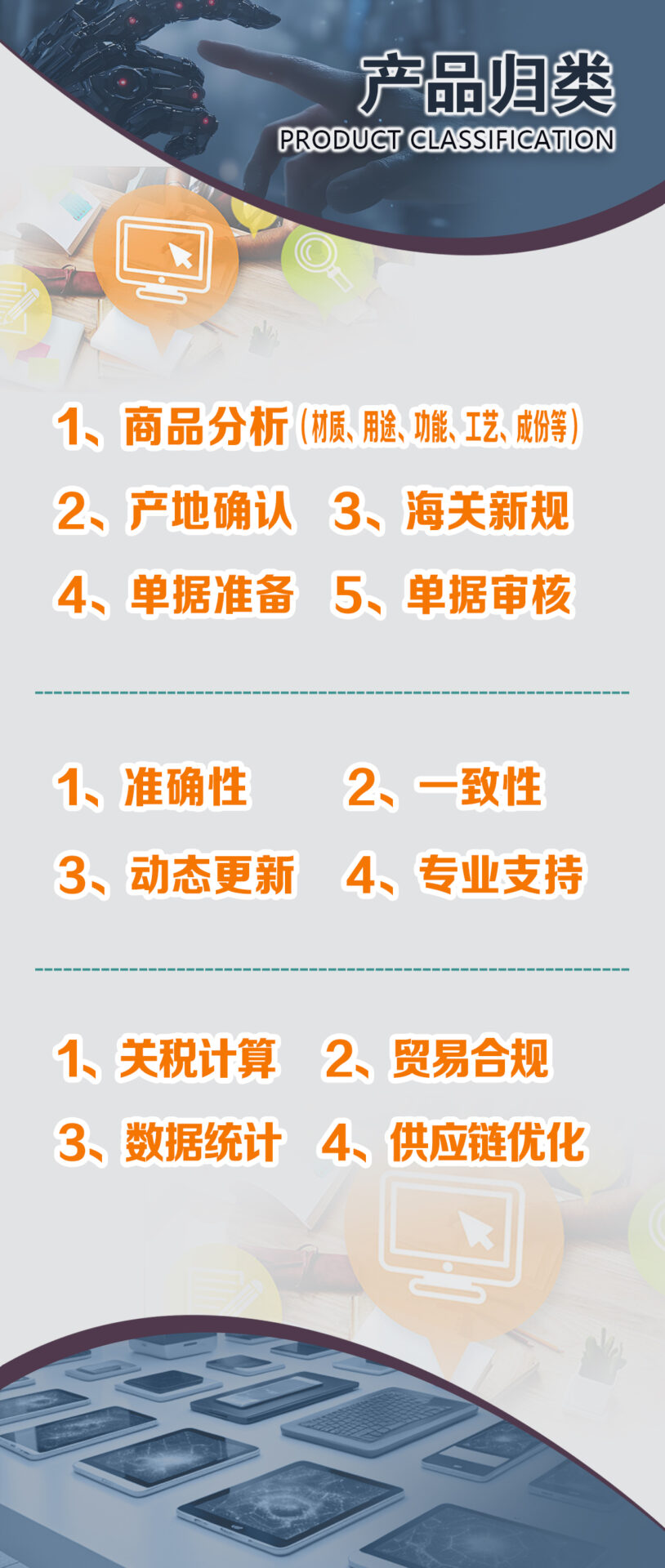Product Classification

The process of systematically and standardized classification of goods based on the Harmonized System (HS) or other classification standards to ensure uniform identification in customs, taxation, statistics, and trade compliance.
The HS system, developed by the World Customs Organization (WCO), is used by over 200 countries and regions worldwide.
Key Aspects of Product Classification
1 Accuracy:
Incorrect classification may lead to high fines, customs clearance delays, or regulatory issues.
2 Consistency:
Both importing and exporting parties must use the same HS code to avoid clearance issues at the destination port.
3 Dynamic Updates:
Regularly verify HS code versions and pay attention to updates from the WCO or Chinese customs authorities.
4 Professional Support:
For complex goods (e.g., multifunctional equipment), consult customs brokers or professional classification agencies.
Application Scenarios of Product Classification
1 Tariff Calculation:
◦ HS codes determine import tariff rates (e.g., 0%-20%) and VAT rates (e.g., 13%).
2 Trade Compliance:
◦Certain goods (e.g., chemicals, medical equipment) require special licenses, which depend on HS code confirmation.
3 Free Trade Agreements:
◦HS codes are used to determine whether goods qualify for preferential tariff rates under free trade agreements (e.g., Regional Environmental Protection Agreements).
4 Trade Statistics:
◦Governments and businesses use HS codes to analyze trade flows and market trends.
5 Supply Chain Optimization:
◦Accurate classification reduces customs clearance time and optimizes logistics costs.
Advantages of Product Classification
1 Global Uniformity: The Harmonized System ensures consistent identification of goods across customs authorities worldwide.
2 Cost Reduction: Accurate classification enables access to the lowest tariff rates or tax exemptions.
3 Compliance Assurance: Adherence to customs and trade regulations reduces the risk of fines.
4 Efficiency Improvement: Streamlines customs declaration processes and accelerates goods clearance.
Product classification, centered on the Harmonized System, is a critical component in international trade to ensure compliance and optimize costs. Accurate classification not only reduces tariffs and clearance risks but also supports businesses in benefiting from trade agreement incentives.
Familiarize yourself with HS rules and leverage professional tools or consulting services to ensure accurate classification.
If you have further questions or need specific HS code inquiries, please let me know!



